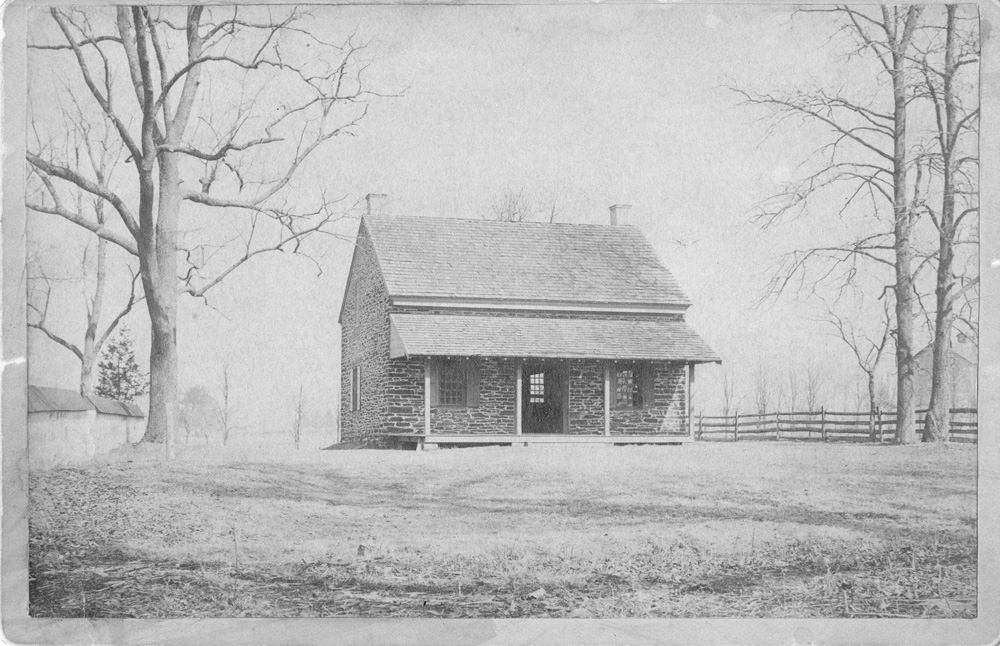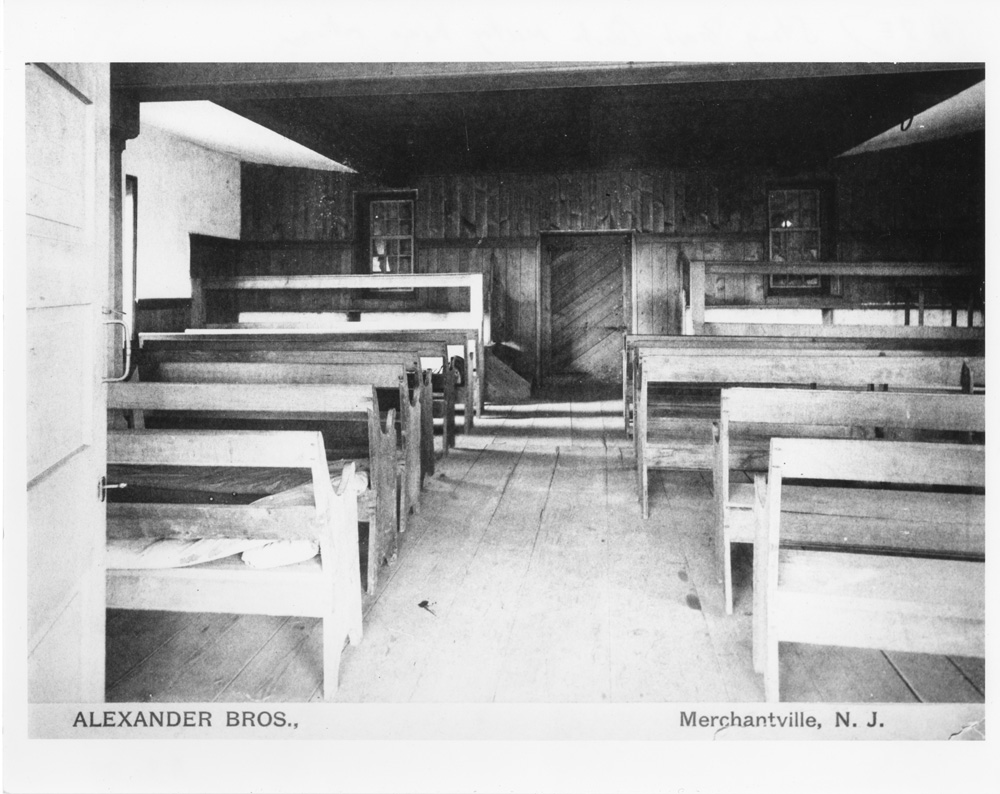
Photograph courtesy of Philadelphia Yearly Meeting

Photograph courtesy of Philadelphia Yearly Meeting
Part of Early Stony Brook.
The Quaker character of early Stony Brook was largely determined by the influence of prominent Quaker proprietors, including Pennsylvania’s William Penn, who purchased large East Jersey plots in the hopes of creating a new Quaker colony. Though this goal did not come to fruition, it did inspire Quaker families to settle together in the late 17th century and establish a small farming community around Stony Brook. Their lifestyles, like their faith, were based on modesty, the absence of social hierarchy, and personal relationships with God.
In 1709, Benjamin Clarke gave about 10 acres of his land for the establishment of a burial ground, school, and meeting house. Until the meeting house as finally built in 1726, meetings were held at members’ houses, though the plot was used as a burial ground right away. In typical Quaker fashion, the community set a price limit of 150 pounds for construction costs. The small building of fieldstone stood until a 1756 fire; the building you see today is the exact same structure that was rebuilt in 1760. This building was the center of Stony Brook village.
The second half of the eighteenth century was particularly eventful for Princeton’s Quakers. First, the advent of the college brought a larger Presbyterian influence to the area, and some Quaker children became Presbyterian converts. (Presbyterianism was especially appealing to slaveholders, as the Quakers had officially banned slavery in 1758.) Then, during the Revolution, the Quakers’ pacifist beliefs moved many to remain neutral throughout the war. Some Stony Brook residents even continued their usual trading relationships with the British. All this put Quakers at risk of legal trouble and imprisonment for disloyalty. During the Battle of Princeton, this meeting house was used as a hospital for soldiers. It is said that the dark stains on the floor are original blood stains.
Original Sections: largely unchanged
Present Use: The Meeting House is still actively used by Princeton Friends Meeting for monthly Quaker meetings.

Stony Brook Meeting house, ca. 1900
Collection of the Historical Society of Princeton

Stony Brook Meeting House interior, ca. 1900.
Collection of the Historical Society of Princeton